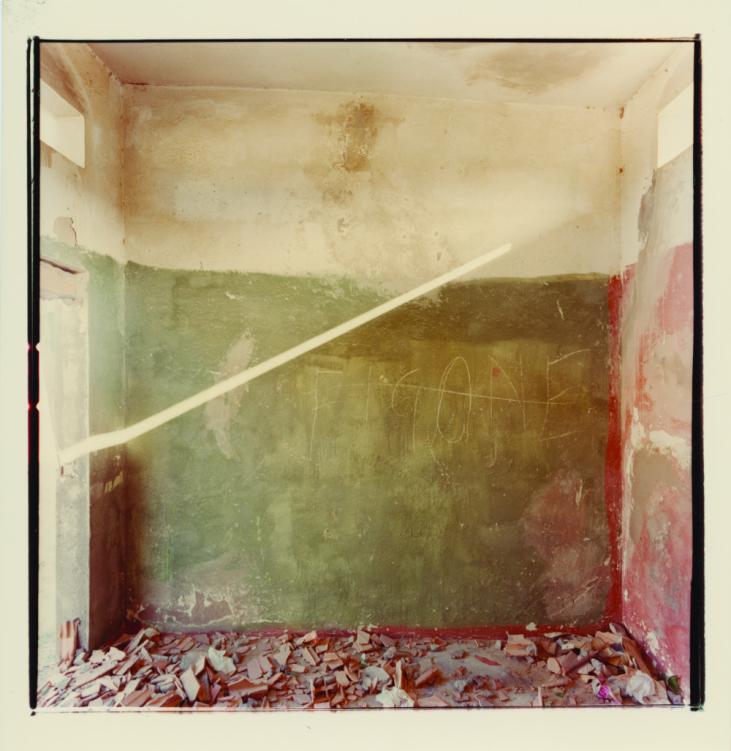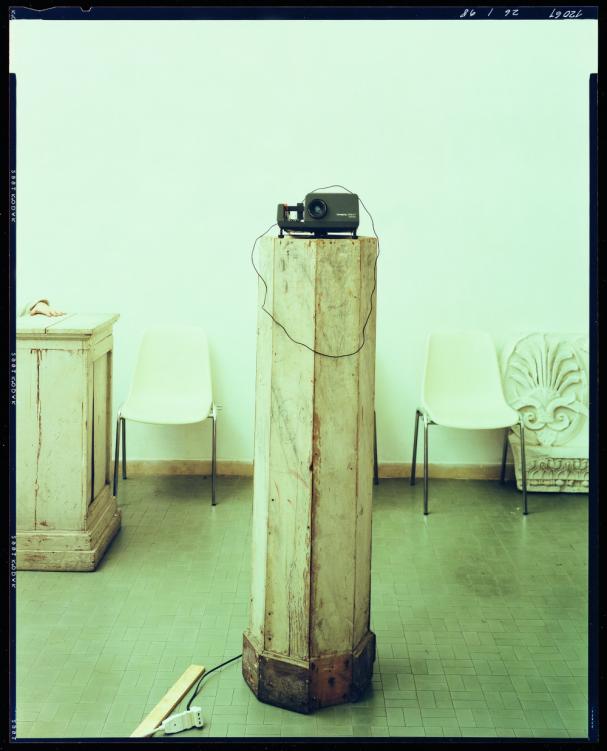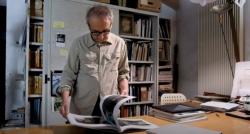Da zero
Guido Guidi
15.10.2021 – 13.02.2022
Curator: Marta Dahó
-> Guided tours to Guido Guidi and Joan Fontcuberta
Guido Guidi (Cesena, Italy, 1941) is a key figure in the revival of photographic practices in the 1960s. His work occupies a fundamental place in the reflection on contemporary landscape, urbanism and architecture, as well as on photography itself. Guidi is an extraordinarily prolific artist and has never ceased to question the act of seeing through the medium of the camera. This questioning has developed through an intense dialogue between the narratives and materialities of photography and what emerges at its margins, in semi-urban landscapes and in neglected post-industrial regions.
This exhibition is the largest retrospective of Guidi’s work to date. Through more than two hundred and fifty photographs, Da zero [From zero], traces his career from his first photographs when he was only fifteen years old to his most recent projects, paying particular attention to the moments that are essential to understanding the depth of his visual thinking. At times irreverently, but often tacitly, Guidi’s work subverts conventional ideas of where to photograph and how to look, of a certain orthodoxy of seeing. Through seeming errors, unusual framing and, above all, an insistent orientation towards the overlooked aspects of the everyday, Guidi’s practice proposes photography as a process of understanding. He is always open to what arises from the experience while shooting, as well as to the multiple readings created by the sequencing of images in published form.
The title of the exhibition, Da zero, refers to the precociousness of Guidi’s first works; it also resonates with Roland Barthes’s concept of the ‘zero degree’ of writing, as an ongoing investigation into what sets a photograph in motion and what makes it possible. Guidi returns to the same place time and again in order to scrutinise the present by paying attention to the slightest details and smallest variations. His work has developed in an expressive form, one that is closer to questioning than to affirmation, opening up a new field of reflection where it is least expected, in the interstices of what is known. In this process he shuns the reductive idea of the photographic image as a vicarious substitute for experience, proposing it instead as a vital space for observation and potential imagination.
This expansive exhibition presents a wide range of Guidi’s works, including the black and white photographs that he took during his adolescence (1956–1957), the experiments that became important in the 1960s, such as those articulated around his “diachronies” (1969–1970), his series on the concept of the façade (1971–1982), as well as a range of photographs taken between 1975 and 1981 that are now exhibited for the first time.
Da zero also presents colour photographs in 6 x 6 format from the early 1980s, including Preganziol (1983). The largest section of the exhibition, in turn, is dedicated to Guidi’s more common 20 x 25 format, which he began to use during his explorations along Via Emilia, the Strada Romea and in the industrial territories of Emilia-Romagna and the Veneto.
As is reflected in his numerous books, Guidi’s most personal investigations are often related to public commissions. His collaboration with the Istituto Universitario di Architettura di Venezia (IUAV) gave rise to projects such as those on social housing, INA-Casa (1999) and ATER (2002). Also, at the invitation of the Canadian Centre for Architecture (CCA) in Montreal, he set out on what would become a decade-long (1997–2007) investigation of the Brion Tomb, by the architect Carlo Scarpa.
Guidi’s working notes from this project are reproduced in the exhibition and can be read for the first time in Spanish translation. This group of works resulting from his constant interest in the spaces of his own daily life also include those arising from his work as a teacher, which mark a time shared with his students and feature the teaching facilities. Among them are the University of Venice, the Faculty of Fine Arts, Ravenna and the photography workshops organised by the Centro di Ricerca e Archiviazione della Fotografia (CRAF) in Spilimbergo and those organised by the Linea di Confine, a platform for publication and education created in 1990 by Guidi, Paolo Costantini and William Guerrieri, which was fundamental for the revival of Italian photographic culture.
Guidi’s work has mainly focused on the areas of Emilia-Romagna and Veneto. However, Da zero also presents more recent works carried out in Sardinia, in addition to lesser-known or previously unexhibited works such as the photographs he took during his first trip to Spain in 1981, and those dedicated to the semi-urban and rural landscapes along an ancient pilgrimage route, linking Saint Petersburg to Fisterra, collected in the project In Between Cities. Un itinerario attraverso l’Europa 1993-1996.
This selection of photographs is accompanied by a presentation of all of Guidi’s monographs to date, as well as various joint publications by Linea di Confine and a video newly-commissioned for the exhibition.








